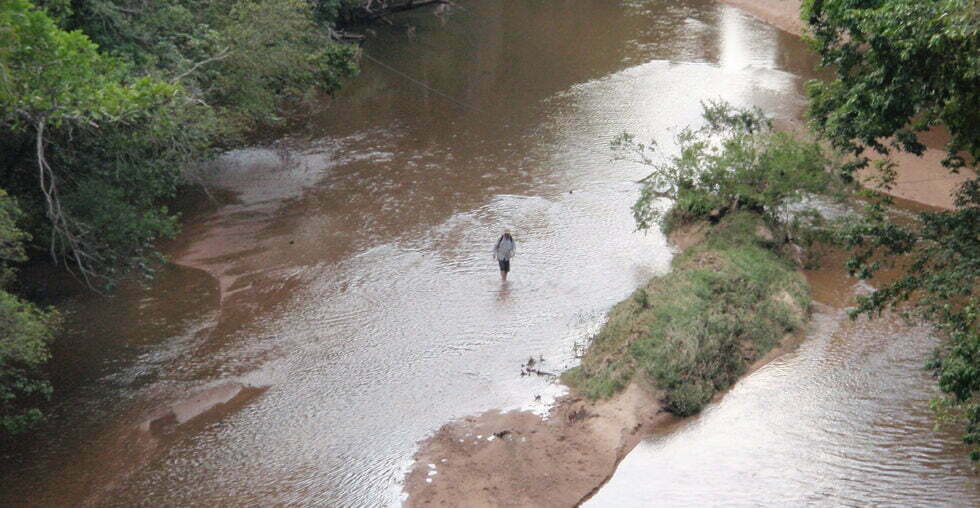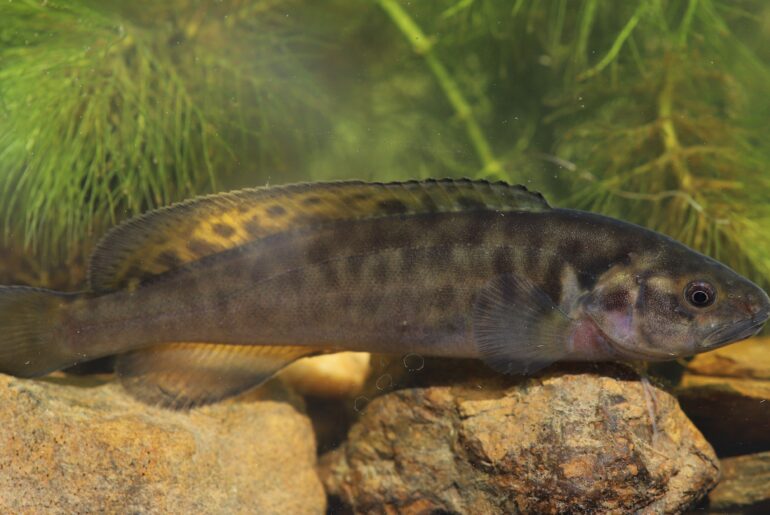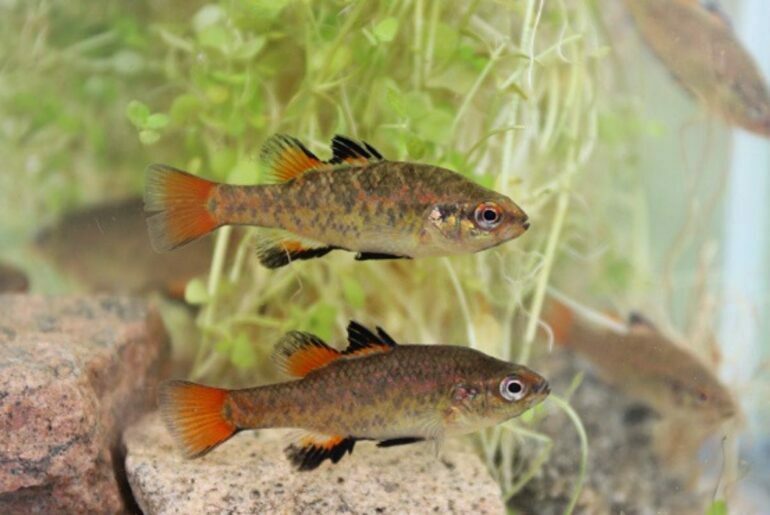This essay speaks for the significance of natural place, particularly riverine place, in human lives. Such places, it’s argued, are restorative; curers of weltschmerz; reinvigoraters of a human sense of proportion.
The place is elsewhere. Not urban. In fact, it’s mandatory that it be away from urban – essentially unpeopled. Fundamentally natural. One should be able to sense it deeply[1], (sense as recall), without being there. It has what the geographer Edward Relph[2] calls “a synaesthetic faculty which combines sight, hearing, smell, movement, touch, imagination, purpose and anticipation.” All of one’s senses and all of one’s mind anticipates (and desires) of this place. Reimagines it; uses it.
We all ‘use’ place. Purpose — why and how we use place — is a key part of all places’ significance. Part of the contract, though, is that such places invite such use; it is never purely a selfish transaction. My immediate purpose in this place (as seen above in photo) is recreational fishing. Mundane angling.
Anticipation of fishing it is part of its beauty, its synaesthesia. I’ve fished it at least forty times, maybe more, over more than 30 years. In the old days, when all I knew was the flinging of concoctions of wood, plastic and metal, I fished it with lures; for the last few years I’ve mostly fished it with a fly rod. It’s a long way from where I now live and I won’t give it a name. To do so, well-established fishing logic goes, is to bring about its demise. The species I am targeting are are sooty grunter, tarpon, maybe a barramundi and the ever-elusive jungle perch.
To get to this place, I’ll follow a road out through farming country along a long valley. I’ve left a smallish town behind and passed a couple of hamlets. The road rises and falls, snoozes in summer heat past houses and tractor sheds and roller birds on wires. It crosses a big river, but I am not fishing that because saltwater crocodiles (Crocodylus porosus) inhabit it. It winds past rain trees and storm damage and waving farmers. A line of mountains creeps closer and then the road is running along the rise and soon I’ll see a faithful sign of imminence; a waterfall that always runs, even in the dry season. Not far now. Do my hands tense a little with anticipation on the steering wheel?
There’s McGinty Road on the right.
From McGinty Road, it’s three hundred and forty metres, give or take one or two metres, to where the road, a little narrower now and not so pleased with itself (all it’s got to offer is a dead end in five or so kilometres) drops down towards the bridge where I’ll park beneath the big, old, fig tree. It’s where I almost always park. Former fireplaces shadow the grass.
I put my 6 weight together, attach a fly called a clouser to an 8-foot leader. Just near the bridge there’s a log jam. It calls to me – normally I’d walk up and away from the bridge before my first cast but the log jam is new. The water piled up around it is deep and dark; the current has excavated what I think looks to be a fishes’ boarding home.
As usual my first cast is too short because I’m worried about my accuracy. I’m rusty. Once again, I tell myself I need to practise more. I over compensate and cast too long. The fly wraps itself around a branch. It tickles the water as I try to jiggle it free. Jiggle, jiggle and then a convolution of water beneath the fly. Nothing hooks up and somehow or other — miracles do happen — the fly is off and vanishing with that lovely, lilting, fluttery goodbye that clousers have when you watch them sink in dark, deep water. Slow strip back in. Something tugs back but I’m too anxious and strike too hard. Nothing.
I’ve called this invisible strike for a tarpon or maybe (it could have been, it might have been) a small barramundi. I unroll another cast, slow strip in, then another, up current and the fly disappears in darkness. Give a slow strip, a pause, a fish hits and is on. Out of the water, knife blade clean, then back and running for the snag pile. Side pressure, heart palpitating, and the fish is stopped and back out, all silver and this is when I shout wahoo…
I slide 35 or so centimetres of tarpon out onto the sand, and reach for my long-nosed pliers. You have to love flies, I tell no-one. I don’t know how many tarpon threw lures on me; with flies, you hold them much better. A quick tug and twist, the fly is disengaged. Hold the fish’s silver, gleaming length a while, in water, cradling it, holding its sudden urge for release.
The tarpon flicks away, back into the dark snag pile, ghost-moon silver in dark, cool water. I smile.
I look upstream. 50 metres up, the creek dog-legs right; I know there will be fish resting beneath a log or tucked in somewhere near where the current has cut away at the steep bank, held in place by matt rush (Lomandra labill). And there will be more further up at the next bend, beneath the lawyer vine draped bank. Then there is the deep section where wading is near-chest deep and I have to hold my chest pack up high, resting on my head; then the long reach with the weeping trees that are not willows. I think again that I must find out what those weeping trees are named because sooty grunter love to hide beneath those places where branches caress the water. I want to make a connection. Imagine a symbiosis. Concoct integrations.
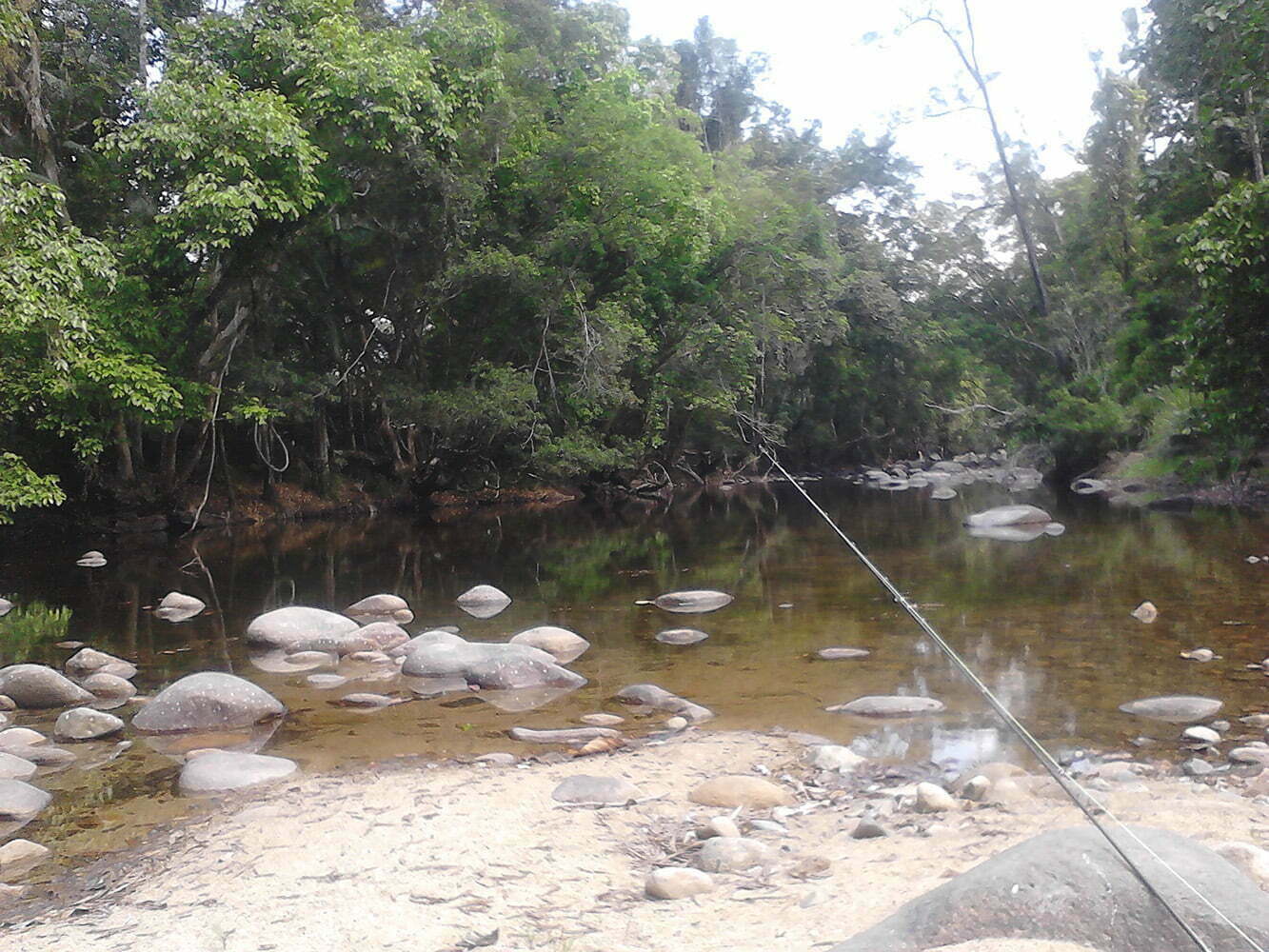
It unrolls in my head, this creek, long before I fish it. I know there will be some changes because I haven’t fished it in over a year but I know it can rely on it. It will be what it is; a place I shall always come back to. The place.
When the term “place” is used geographically (as in the expression, “The place where I live is…”), the reference usually seems to be to somewhere about the size of a landscape that can potentially be seen in a single view [my emphasis] — for example, a village, small town, or urban neighbourhood. Edward Relph, 2011, A pragmatic sense of place
The internet lets us cheat a little on our sensing of place: Google Earth© lets me take it in, from headwaters to confluence with the big river, in that single view. But I remind myself that such sensing is not, really, a part of this. Nor, indeed, of any other place. The scale of an internet viewing is not human. Not practical, given the limitations of human presence and capabilities. And not, here, what I know. I have never scaled the ladder of the topography down which the creek descends. (This topography is blessed because it is mostly preserved in a National Park.) I have been no further than a two-day fish/walk up from where the creek joins the big river. (Fish/walks are much slower than ordinary walks.) There is, so Google Earth tells me, more fishing to be had in this creek than I have ever done and there are parts of it I’d still like to go, different to what I know and sense simply because I’ve never been there. Those places I’ve yet to go, to be, are ones with imagined continuities and dissonances that differ from those I have already travelled. Different histories to mine. Place and self not yet bonded.
A reason to explore; maybe next time.
Outside the national park the landscape is dominated by alien activities (beef cattle and mixed farming: lychees, guava, some sugarcane, other exotics). The river and its environment is the traditional land of the Girramay, Bandjin and Warrgamaygan peoples[3]. They would, I’m sure, have known and loved the essential lineaments of this place; peopled it with stories, swum in it, worshipped its shade, trapped its eels and snakes and birds, caught its fish, eaten its plants. However, like much of the native vegetation in the wider valleys, they were (under the auspices of either pest removal or the now-deeply-ironic government mandate of protection) fundamentally removed as a significant influence on this place after Europeans came here to do what they do — and did — in the mid to late 19th and early 20th centuries.
Down deep in the creek, however, while wading, I can still feel it is as it may have been when they camped here, fished it, loved it. Riparian vegetation still shades the creek; azure kingfishers (Ceyx azureus) still perch and watch the water, and me; eastern water dragons (Physignathus lesueurii) leap ashore from partially drowned branches when they sense me coming. Sometimes I see them; sometimes I only hear a splash, see only momentarily disturbed water.
Time is addled here. Over the decades in which I’ve visited it, the creek has been a paradigmatic lesson in history, proffering reflections on change and continuity. Big fish lurk beneath undercut banks and in drowned timber in pools which are going about the business of reshaping themselves, thanks to the flux of depositions of sand, pebble and detritus. The pools are reshaped but still there: the underlying bedrock has a say. And the fish, which move with the ebb and flow of change. Trees are uprooted by cyclonic storms and clearfell banks, topple into water. Such drowned timber will always provide homes or shelter for fish, and a tangle of wood out of which long necked turtles[4] peer. Some of the snags are gone (I recall distinctive snags with pleasure, or with the shudder of a lost fish, particularly a big jungle perch that broke me off on branches below.
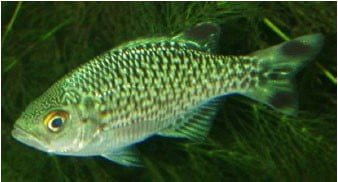
the water near a track made by some farmer’s car). Some of the snags remain. New snags are found, or known ones have changed in some way that makes them new again. The ivory-white seeds of creek lilly-pillys (Syzygium smithii) still float downstream. Some of the huge or weirdly distinctive bankside trees I remember are gone, some are still there, new seedlings grow. It changes, it stays the same; like a home where the bushes have grown taller and the rooms taken a new coat of paint.
I’ve brought friends here. I and another friend may have found this place but it’s too precious to leave unexplored by others I like. Let me re-visit Edward Relph’s idea that place’s ‘synaesthetic faculty combines sight, hearing, smell, movement, touch, imagination, purpose and anticipation’; such a combination is better shared, shared place becomes community. A bedrock for reminiscence.
Virginia Woolf[5] wrote of the places she visited on her perambulations as “accidentally but miraculously sprinkled with beauty”. She was writing of urban places but the same principle applies to this chiefly natured one. Human activity and intrusion (it is certainly not pristine wilderness) sully it; climatic extremes such as cyclones and devastating floods amend it; the footsteps of others who fish it or walk its banks mark it; still, it is beautiful in accidental ways.
What a fine word ‘accidental’ is, as if beauty that is planned, organised, is a beauty somehow less worthy, something contrived. What I perceive as accidental beauty comes down to personal perceptions of the aesthetic, to my reading of methodologies of change and continuity, to the actions of personal memory and anticipation (i.e. one’s own sensing of place), to my emotional register. Where is the weeping melaleuca that hid a deep hole on that steep bank a little way beyond the stony run? It has been stolen by a savage flood — I feel loss.
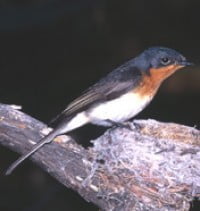
Satin flycatchers (Myiagra cyanoleuca[6]) surprise me in a moment of stillness, and pause, watching… but I’ve seen them here before; the surprise is perhaps better for its familiarity. After all, who cannot help but take some sort of security from a known and ordered universe. I anticipate the tangled ruins of some bankside giant dumped on a bend after cyclone X… and there it remains — satisfying.
Nick Gadd noted[7] that we need what Virginia Woolf called ‘a pretext’ for walking a place, some excuse for intruding on country, a purpose which is essential to our sensing of place. Fishing is my purpose; pretext, yes, but more than that. Whoever merely fishes? I carry binoculars to watch birds. I walk. I cast. I move on. I scramble over downed trees, scale banks, avoid tangled thickets, stop at sudden movement (wild pigs, a goanna, a wallaby). It is hot away from the water. I curse sweat rolling into my eyes, then fling cool water up into my face when I come down again to the creek, enjoy walking into coolness. Sometimes I stop to swim in cool, deep holes of water…
I love it most when I leave the farm verges behind and enter the wild gorge country, untainted by wire and cow. I drink there. I sit with my de-booted feet dangling in water and let little fish nibble. Carpet snake skins coil in dry grass. Grey lichened boulders protrude from fast water. Whistling kites call overhead, over deep, still pools. Stippled light glints through trees. In a sudden opening to sky, sun bounces off still water.

Relph (2011) argues that ‘the deepest sense of place seems to be associated with being at home, being somewhere you know and are known by others, where you are familiar with the landscape and daily routines and feel responsible for how well your place works[8].’ I cannot claim responsibility for how this place works but I can argue that at least some of what has been done by me in my life has been protest at the stripping away of nature from treasured places like this one (perhaps a familiarity with this place’s rhythms engineers how it works for me). Such de-naturing of place, I’d argue, helps to create T. S. Eliot’s ‘shape without form, shade without colour, paralysed force, gesture without motion…'(The Hollow Men, 1925). This place and the ways in which I sense it may be very different from how the Girramay, Bandjin and Warrgamaygan peoples knew it — their perspectives are outside the purview of my allotted span — but what I do love about my relationship and interactions with it is that they have a true form, shade and colour, force. This place asks of me to construct meaningful gestures.
If my primary (ostensible) reason has been to fish, then my sense of this place, both real and imagined, reminds me that place, natured place, is far more than this one activity. Fishing it has never been my only rationale for being there. I feel at home. Should this place ever be my one last port of call (yes, I have imagined snake bite or rock fall and sudden demise – a fantasy of my undiscovered body organically decomposing), it would feel as if I was interred in soil that is known. I have told people that I (body discovered) would like to be buried beneath some tree on its banks, high enough up so that I cannot be washed away in some middling flood but close enough to hear it run, even in dry winters. If only such a thing were possible.
Here I am not disordered with nature’s deficit. Here I am, at least for a time (and what more can anyone ask), restored. What better place to rest a while?
By Stephen Kimber – an Australian author and teacher with over 20 texts published. He has co-authored several educational texts in English, History and Geography for John Wiley & Sons (Jacaranda), Nelson Thomson (CEngage), and others. He’s the author of the YA novella, Or the cooling of Nathan Pearson, three plays and many short stories.
Footnotes:
[1] In A Pragmatic Sense of Place (2008-09), Edward Relph speaks of a distinction between ‘spirit of place’ and ‘sense of place’. One may say that the difference between them is that the spirit of a place, in lying outside us, is essentially transmitted to us. In contrast, the sense of a place is received, internalised, interpreted.
[2] Relph E., A Pragmatic Sense of Place (2008-09).
[3] See Queensland Government, Cultural Histories E – I, Hinchinbrook Shire, 2015 and Qld Government, Department of National Parks, Sports and racing (what a strange amalgam), Dalrymple Walking Track, 2016.
[4] Probably Cann’s long-necked turtle: Chelodina (Chelodina) canni.
[5] Woolf’s essay Street haunting: a London adventure is cited by Nick Gadd, 2014, A landscape of stories.
[6] Birds in backyards, 2016, http://www.birdsinbackyards.net/species/Myiagra-cyanoleuca
[7] In A landscape of stories, 2014.
[8] A Pragmatic Sense of Place
Bibliography
- Atlas of Living Australia, 2016, http://www.ala.org.au/
- Nick Gadd, 2014, A landscape of stories
- Richard Louv, 2011, The nature Principle, Human Restoration and the end of nature deficit disorder
- Queensland Government, 2015, Cultural Histories E – I, Hinchinbrook Shire,
- Queensland Government, 2016, Department of National Parks, Sports and racing, Dalrymple Walking Track
- Edward Relph, 2011, A Pragmatic Sense of Place
- Anna Weldon, 2010-11, Threshold Country
